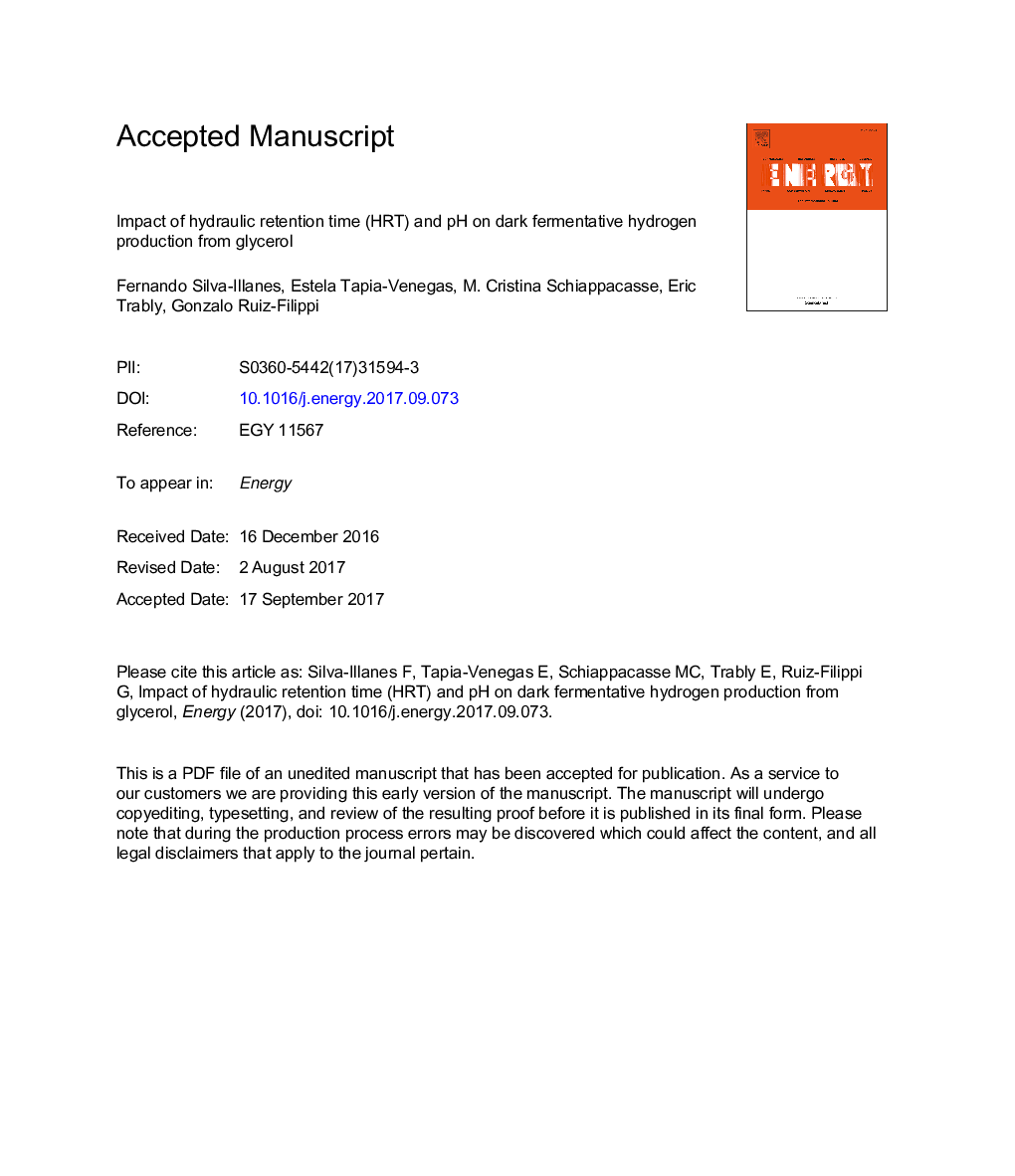| Article ID | Journal | Published Year | Pages | File Type |
|---|---|---|---|---|
| 8072618 | Energy | 2017 | 38 Pages |
Abstract
Hydrogen is a promising alternative of clean energy carrier which can be biologically produced from glycerol-rich waste an abundant and economic source of substrate. However, continuous hydrogen-producing systems still need to be improved and in particular by manipulating the only few available operating conditions. The aim of this study was to investigate the effect of the two main operational parameters, ie. pH and hydraulic retention time (HRT) on hydrogen yields and microbial community structures. For that, a continuous stirred tank reactor (CSTR) was first inoculated with an enriched mixed microflora and was then fed with glycerol. A strong influence of these two operational parameters was shown on hydrogen yields where the maximum yield (0.58 ± 0.13 molH2molâ1glycerol) was achieved at pH 5.5 - HRT 12 h and was 28.5 times higher than the minimum (0.02 ± 0.02 molH2molâ1glycerol) obtained at pH 5.0 - HRT 14 h. Changes in most dominant microbial populations were mainly influenced by the pH. Interestingly, HRT parameter related to changes in the metabolic patterns and influenced the composition of subdominant microorganisms, suggesting they might have a key role in changing the ability of the consortium and/or the activity of dominant microorganisms to produce hydrogen.
Related Topics
Physical Sciences and Engineering
Energy
Energy (General)
Authors
Fernando Silva-Illanes, Estela Tapia-Venegas, M. Cristina Schiappacasse, Eric Trably, Gonzalo Ruiz-Filippi,
